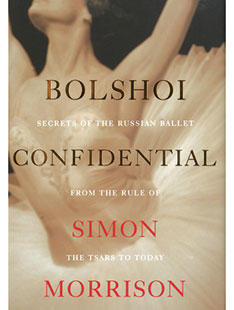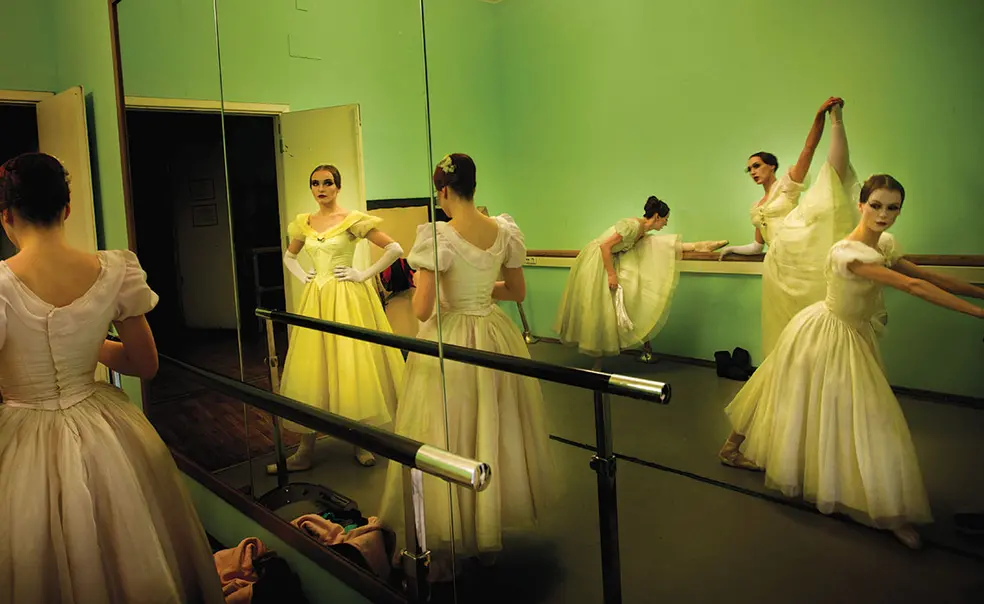
In 2013, a hooded man approached Sergei Filin, artistic director of the Bolshoi Ballet, and flung acid into his face. Later, a soloist from the ballet confessed to orchestrating the attack. The exalted Russian ballet’s tumble into the sordid piqued the interest of music professor Simon Morrison *97, whose focus includes 20th-century Russian music. “I wondered what kind of tensions existed in the theater from the start,” said Morrison. After all, the Bolshoi is just a few blocks from the Kremlin; “As goes Russia, so goes the Bolshoi Ballet,” Morrison writes in Bolshoi Confidential: Secrets of the Russian Ballet from the Rule of the Tsars to Today (Liveright). He spoke to PAW about the relationship between art and politics and what he calls “the pressures that produced the masterpieces of the ballet canon.”
What does the acid attack reveal about the Bolshoi and about Russia in general?
Dancers are not paid and contracted as well, or as properly, as at other companies outside of Russia, say. So there are imbalances and the resentments that naturally arise from them.The dancer who organized the attack thought of himself as a defender of the rights of lower-ranking dancers, and wanted to be the head of the artists’ union. Filin made himself briefly the head of the artists’ union, a blatant conflict of interest, and his nemesis, Pavel Dmitrichenko, sought revenge [through the attack]. So this crime stemmed from, first, hotheaded irrationalism, but also from the many structural injustices in how employees are treated in the theater.
How has the theater historically been linked to Russian politics?
The kinds of ballets that were performed in the 19th and 20th centuries reflected Russia’s imperial ambitions. For example, ballets were put on for coronations of czars. These ballets also featured ethnic or national dances to show the kind of lands or peoples that Russia had conquered — and also hypothetically the lands and peoples that Russia planned to conquer. There were also ballets that represented the mineral wealth of the country, with dancers dressed to represent pearls and gold, things like that. There were periods in the 19th century when there was talk of closing down the Bolshoi altogether. But it was deemed important for these kinds of political pageants.
Artists at the Bolshoi have to deal with a lot of censorship. How did that change over time?
In the 19th century, before the Soviet era, the censors chiefly looked at the libretti, the scenarios, the plotlines, to see whether or not there were signs of subversion or prohibited depictions of the czar or a royal person. Nineteenth-century rulers of Russia didn’t worry too much about dance and music being subversive, because they didn’t think of the power of art in this sense.
In the 20th century, Moscow became the capital, and the Bolshoi, which was very close to the Kremlin, became the No. 1 theater in the country. For the Bolshoi Ballet to survive under the Soviets, it needed to stage ballets that had ideological content supporting socialist-communist principles and the agenda of the Bolsheviks.
Initially, I thought this theater managed to produce classics like Swan Lake, Don Quixote, and Romeo and Juliet despite all of the political pressures and tensions. After I finished the book I realized it was the opposite — that great art was produced almost in response to, and in a strange way needed, these pressures. A lot of the challenge facing the theater involved responding to very crude political directives and political circumstances, and turning ideological dreck into workable scripts for powerfully athletic, virtuosic performances.
WEB EXTRA
You devote an entire chapter to one mid-19th-century dancer, Ekaterina Sankovskaya. Why?
There's not much written about Sankovskaya in Russian, and the archival files are thin, but she was a remarkable ballerina with a fanatical fan following in Moscow. I found a lot of vibrant recollections and descriptions of her performing. She was the first dancer associated with things like ticket scalping. Or the claque — feverish fans, some of them university students, who would over-applaud her and get up to mischief and try to ruin the evenings of rival dancers. She was the first famous Muscovite ballerina to have this kind of cult following.
What was the role of the Bolshoi in the Soviet period after Stalin?
[The ballet] went to London, New York, a lot of other places, and these tours were, for people, the first glimpse of this mysterious land, the Soviet Union. On one hand, some of the ballets they performed in the West were ideological, like Spartacus, which is about a slave revolt, the head of the slaves defeating the brutal emperor. But at the same time, when people saw the Bolshoi perform they just saw these really warmhearted, generous dancers who cared a lot about the audience, and really wanted to create that connection. So it was an amazingly successful thing for the Soviet regime to get behind. It was profitable, and the Soviet Union needed hard currency. And also the works themselves were great for warming up relationships between the West and the Soviet Union.
The big ideological ballets were put on in the Soviet Union for Soviet audiences. On tour … it was more like they would do some classics just to show the veneration of tradition, the huge size of the company, and to give audiences what they wanted, what they were familiar with.
… Dance went in a very different direction during the ’30s and ’40s outside of Russia. Russia was still very much interested in telling stories and narrative, [but] outside [Russia], dance took a direction toward more abstract, formalist productions. So it was a kind of weird, time-traveling shock to see this company come to the West and perform in a style that was considered to be on one hand old-fashioned, but at the same time reminded audiences that actually this art was very good at telling stories and emotions and psychology. That was something that people quickly began to admire, and began to see the abstraction of some aspects of Balanchine and some other choreographers as being impoverished by a comparison.
Interview conducted and condensed by Eveline Chao ’02













No responses yet